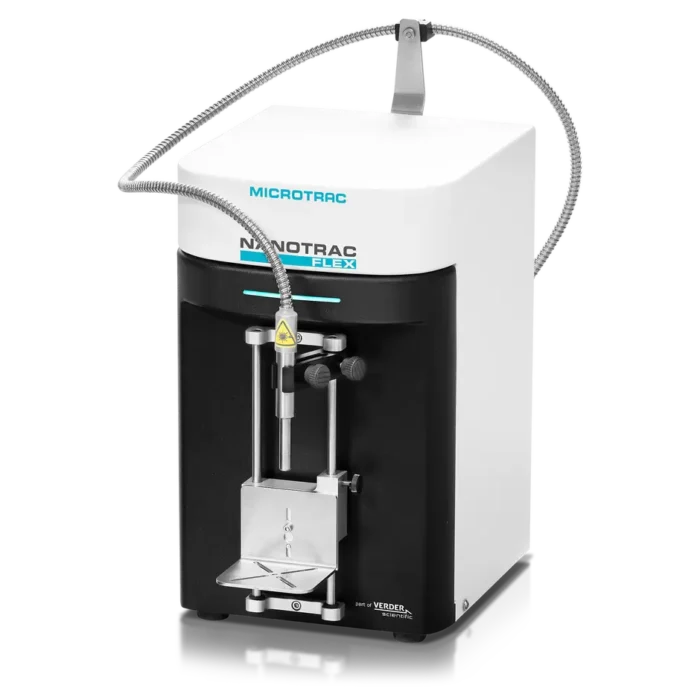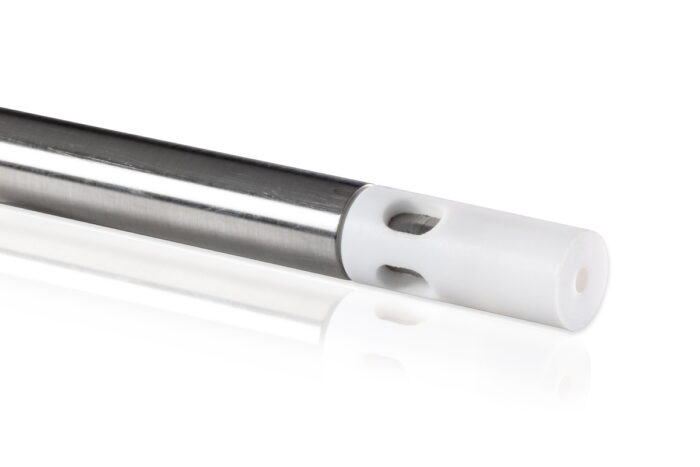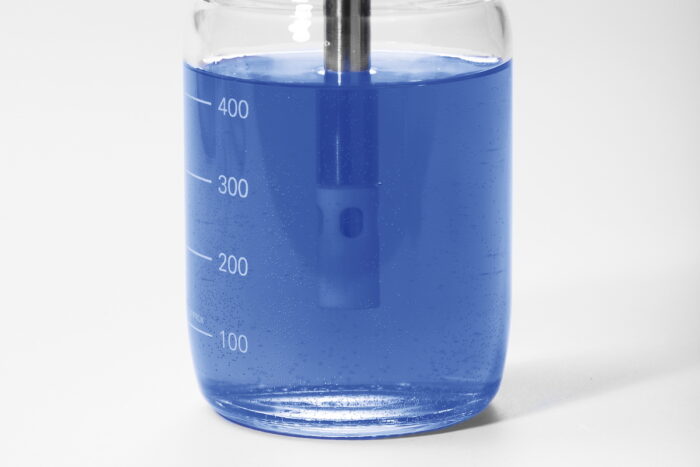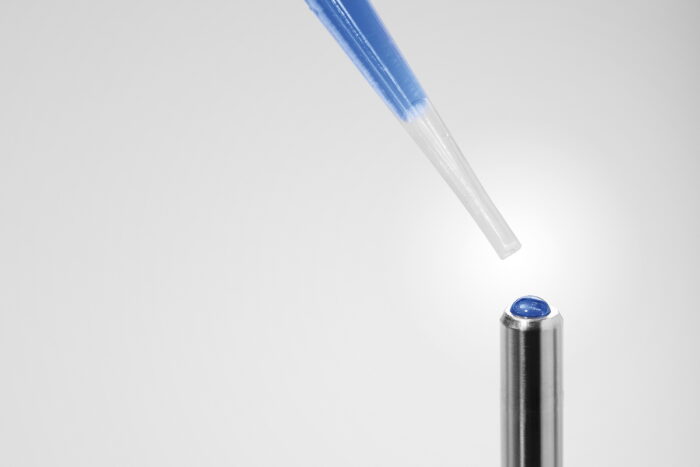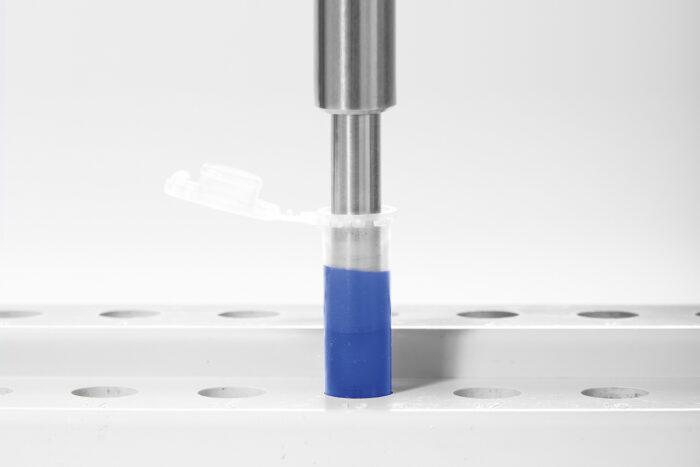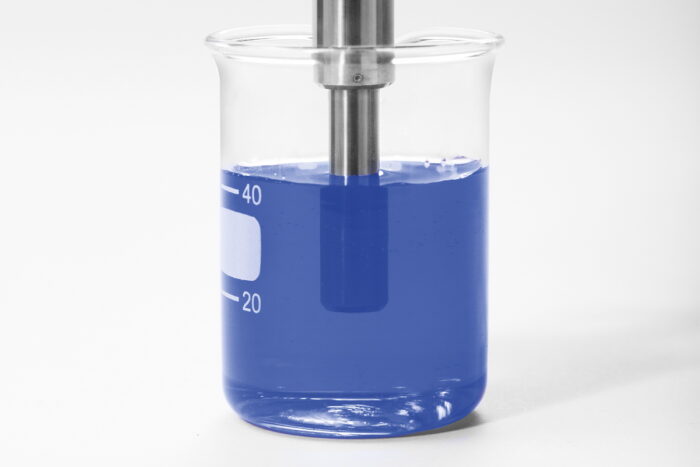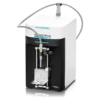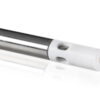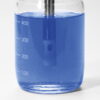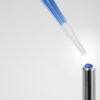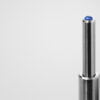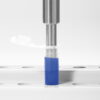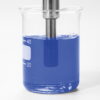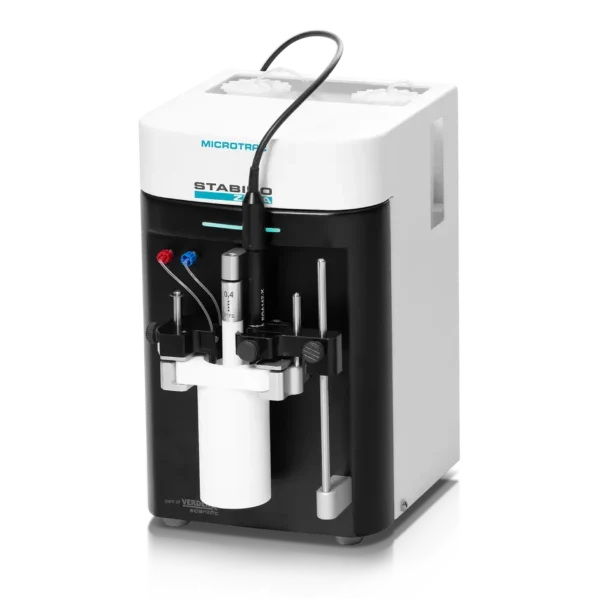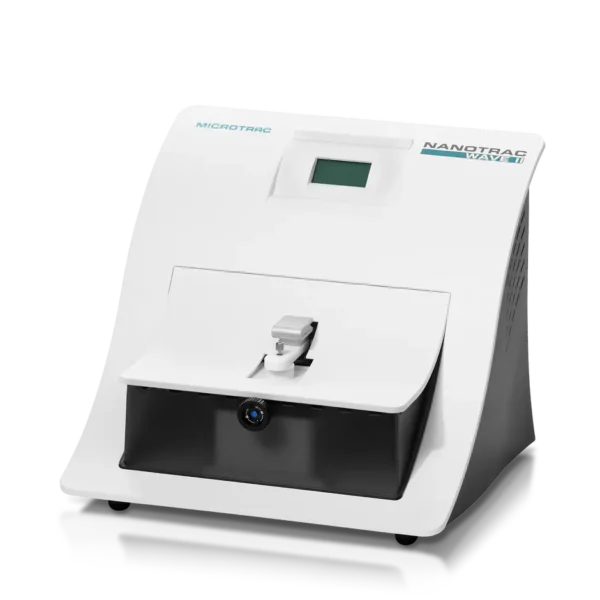Microtrac’s NANOTRAC Flex is a highly flexible nanoparticle size analyzer based on Dynamic Light Scattering (DLS) which provides information on particle size, concentration, and molecular weight. It allows faster measurements with reliable technology, higher precision, and better accuracy. All of this combined into a compact DLS analyzer with a revolutionary fixed optical probe.
With the unique and flexible probe design and the use of the Laser Amplified Detection method in the NANOTRAC FLEX, the user is able to choose an appropriate vessel as a measurement cell to satisfy the needs of any application. This design also allows measurements of samples over a wide concentration range, monomodal or multimodal samples, all without prior knowledge of the particle size distribution. This is made possible through the use of the Frequency Power Spectrum (FPS) method instead of classical Photon Correlation Spectroscopy (PCS).

Nanoparticle Size Analyzer NANOTRAC FLEX
- Most flexible Dynamic Light Scattering ever
- Unique external probe design
- In situ particle sizing and monitoring
- 180° backscatter DLS setup
- Turn any vessel into a sample cell – no consumables required
- External probe allows dip and measure
- Universal solvent compatibility
- Small footprint
- Frequency Power Spectrum calculation model instead of PCS
- Laser Amplified Detection – high signal to noise ratio
The unique design of the NANOTRAC FLEX probe allows to measure down to only 2 µL, thus requiring only a minimum sample volume. The probe also easily fits into a 1.5 ml Eppendorf Tube®. With the NANOTRAC FLEX, every vessel can be used as a measurement vessel, and there is no need for cuvettes of any kind. This makes it possible to use the probe either at line or in line for monitoring the particles’ growth during a reaction.
During a reaction, the dispersion is either flowing or stirring. The dispersion motion will obscure the Brownian motion, and a Dynamic Light Scattering (DLS) measurement is normally not possible.
To measure in stirring or moving liquids, the FlowGuard can be used. This special cap for the NANOTRAC FLEX probe tip creates an enclosure around the probe, which shields the measurement surface from turbulent flow. An orifice ensures the constant exchange of the sample, while slowing down the stirring movement at the probe interface. This design ensures an accurate particle size distribution that is representative of the suspension outside the enclosure.
This probe design enables the measurement of samples over a wide concentration range, monomodal or multimodal samples, all without prior knowledge of the particle size distribution. The probe is also very easy and quick to clean between sample measurements of any kind. Additionally, the user can choose from a wide array of measurement cells to satisfy the needs of any application.
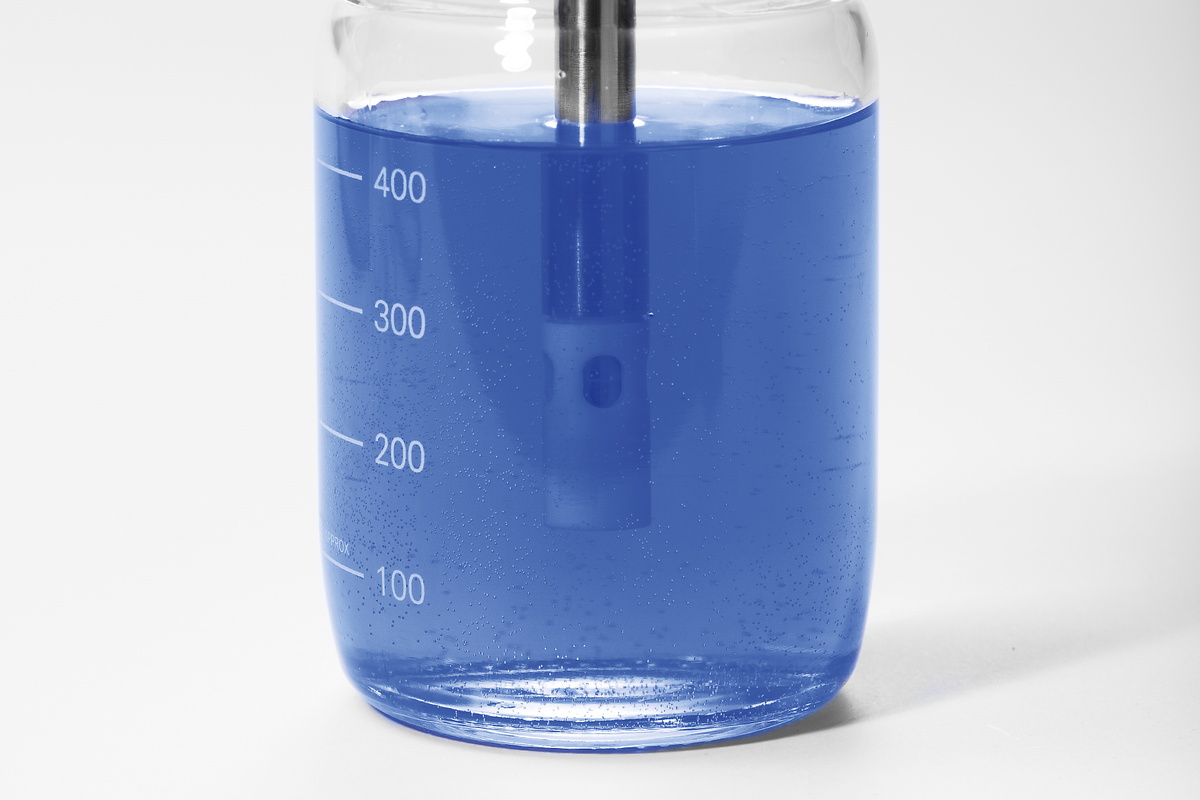
Zeta Potential Analyzer STABINO ZETA
Fast Zeta Potential Measurement & Titration
The STABINO ZETA provides very fast, precise, and reproducible zeta potential measurements due to its high resolution and data point density, respectively. The STABINO ZETA can measure the zeta potential of particles in a range of 0.3 nm to 300 µm, with a concentration range of up to 40% by volume.
Thanks to the unique measurement technology, the STABINO ZETA can determine five parameters simultaneously within a few seconds. In combination with Microtrac’s DLS analyzer, NANOTRAC FLEX, the size can be measured at the same time, in the same sample.
In addition, the STABINO ZETA has a built-in titration function where all the parameters are analyzed simultaneously at every dosage step. The determination of the isoelectric point is one of the possibilities of titration and is completed within a few minutes.
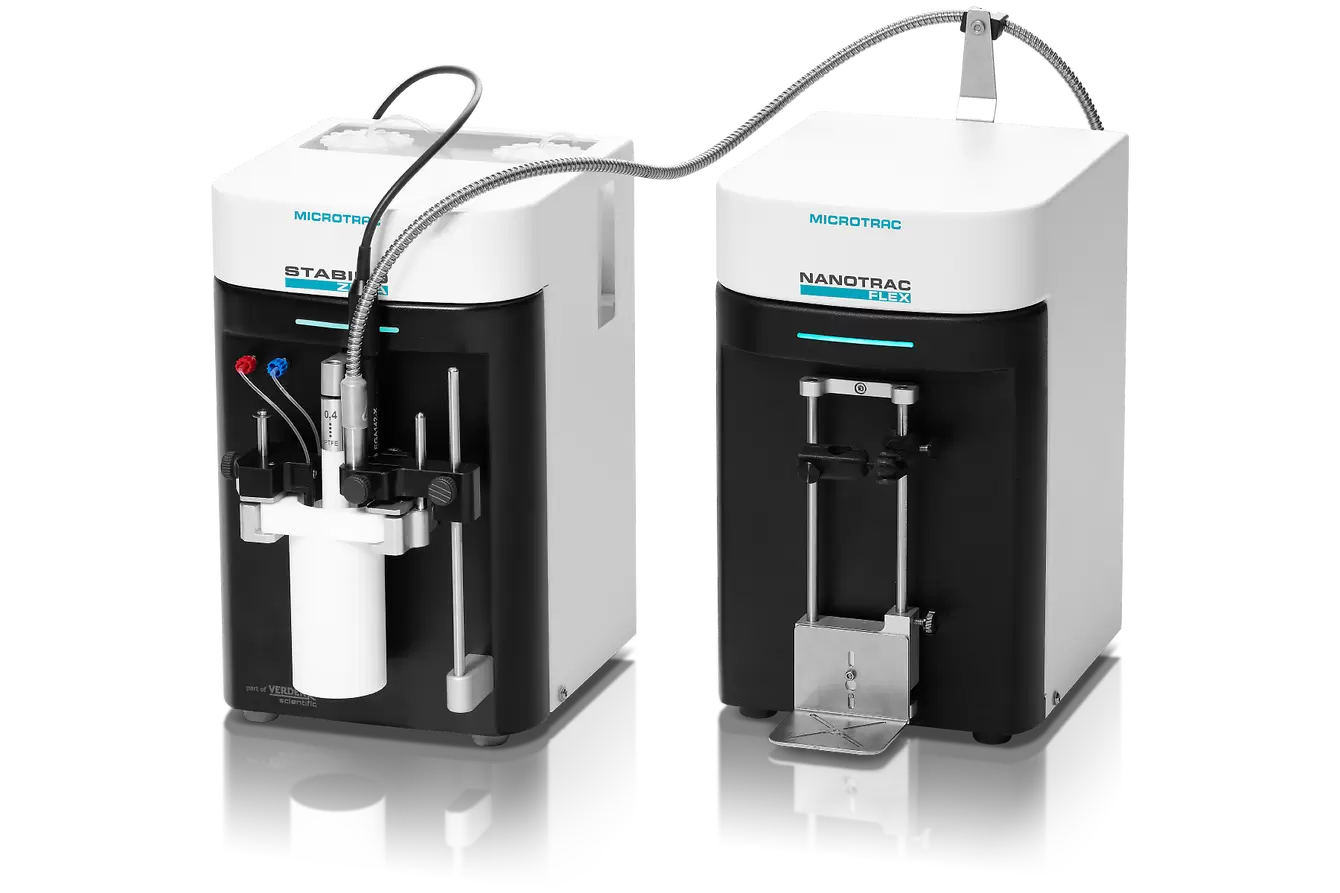
Typical Applications
Versatility is a great strength of Dynamic Light Scattering (DLS). This makes the method suitable for a variety of applications in both research and industry, such as pharmaceuticals, colloids, microemulsions, polymers, industrial minerals, inks and many more.

pharmaceuticals
- pharmaceuticals
- inks
- life sciences
- ceramics
- beverages & food

emulsions
- colloids
- polymers
- microemulsions
- cosmetics
- chemicals

steel
- environment
- adhesives
- metals
- industrial minerals… and many more!
Nanoparticle Size Analyzer NANOTRAC FLEX
Functional Principle
The optical bench of the nanoparticle size analyzer NANOTRAC FLEX is a probe containing an optical fiber coupled with a Y splitter. Laser light is focused on a volume of sample at the interface of the probe window and the dispersion. The high reflectivity sapphire window reflects a portion of the laser beam back to a photodiode detector. The laser light also penetrates the dispersion and the particle’s scattered light reflects at 180 degrees back to the same detector.
The scattered light from the sample has a low optical signal relative to the reflected laser beam. The reflected laser beam mixes with the scattered light from the sample, adding the high amplitude of the laser beam to the low amplitude of the raw scatter signal. This Laser Amplified Detection method provides up to 106 of times the signal to noise ratio of other DLS methods like Photon Correlation Spectroscopy (PCS) and NanoTracking (NT).
A Fast Fourier Transform (FFT) of the Laser Amplified Detection signal results in a linear frequency power spectrum which is then transformed into logarithmic space and deconvoluted to give the resulting particle size distribution. Combined with Laser Amplified Detection, this frequency power spectrum calculation provides robust calculation of all types of particle size distributions – narrow, broad, mono- or multi-modal – with no need for a priori information for algorithm fitting as it is for PCS.
Microtrac’s Laser Amplified Detection method is unaffected by signal aberrations due to contaminants in the sample. Classical PCS instruments need to either filter the sample or create complicated measurement methods to eliminate these signal aberrations.
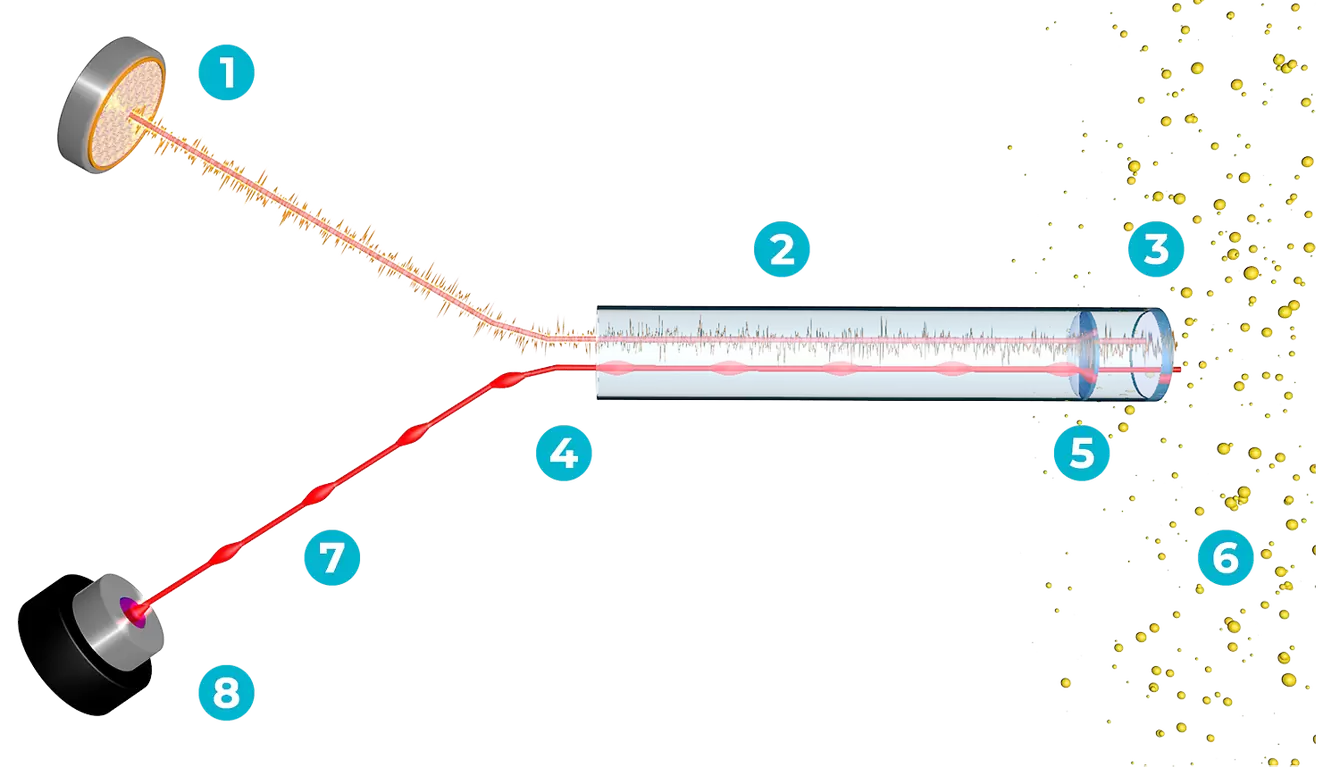
1. Detector | 2. Reflected laser beam & scattered light | 3. Sapphire window | 4. Y-beam splitter | 5. GRIN lens | 6. Sample | 7. Laser beam in optical fiber | 8. Laser

1. Estimate size distribution | 2. Calculate estimated particle size | 3. Calculate error in particle size | 4. Correct estimated distribution | 5. Repeat 1-4 until error is minimized | 6. Minimum error distribution is best fit
Content may be subject to modifications or corrections

